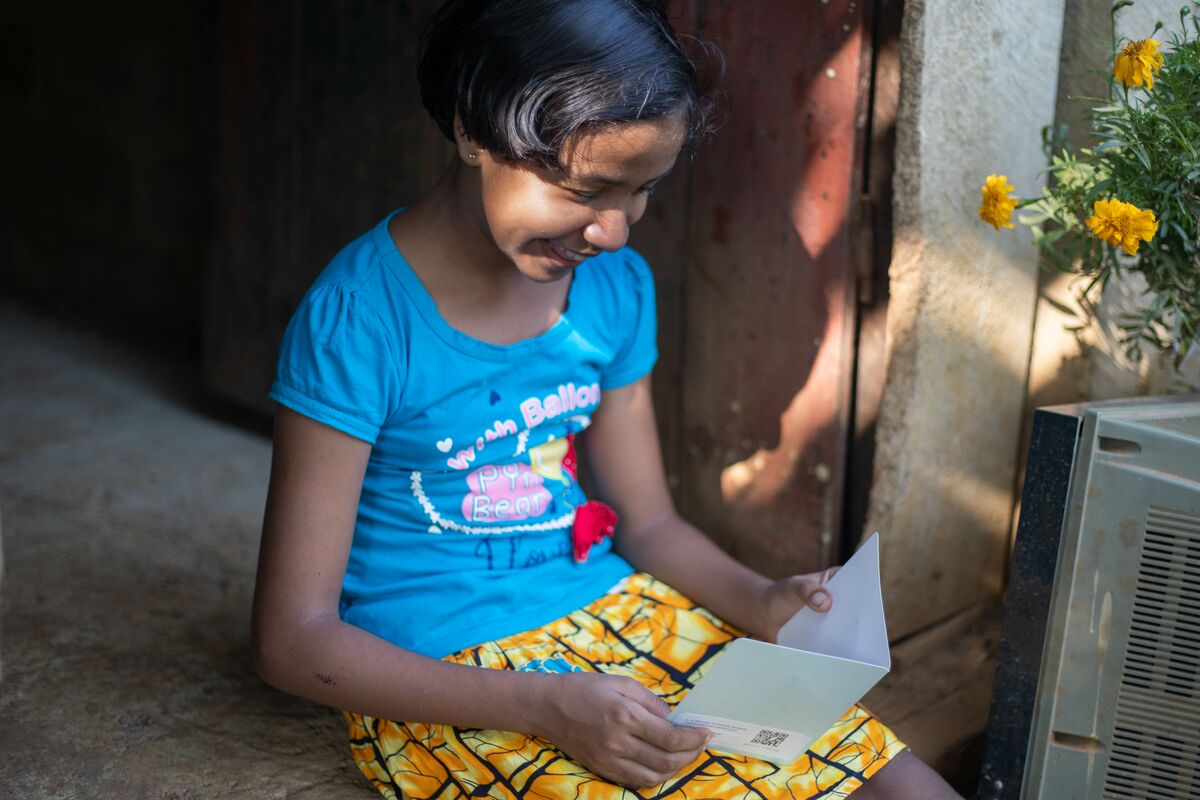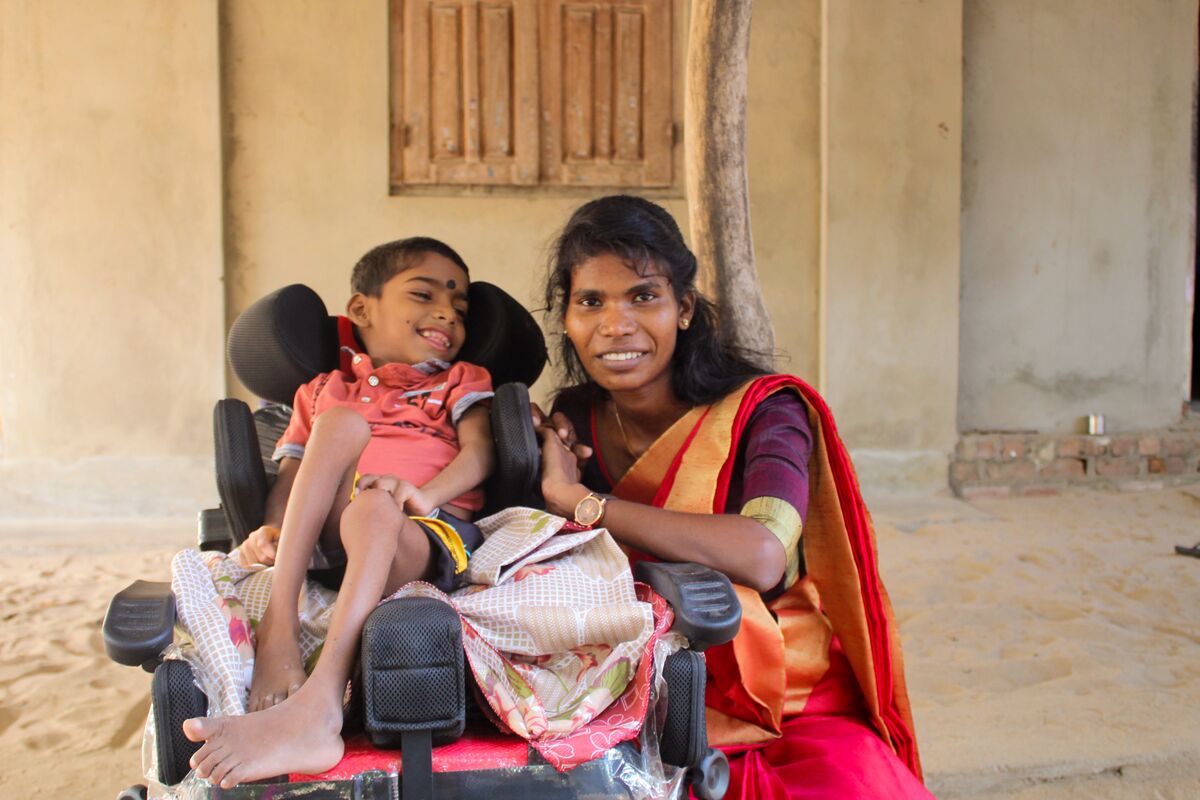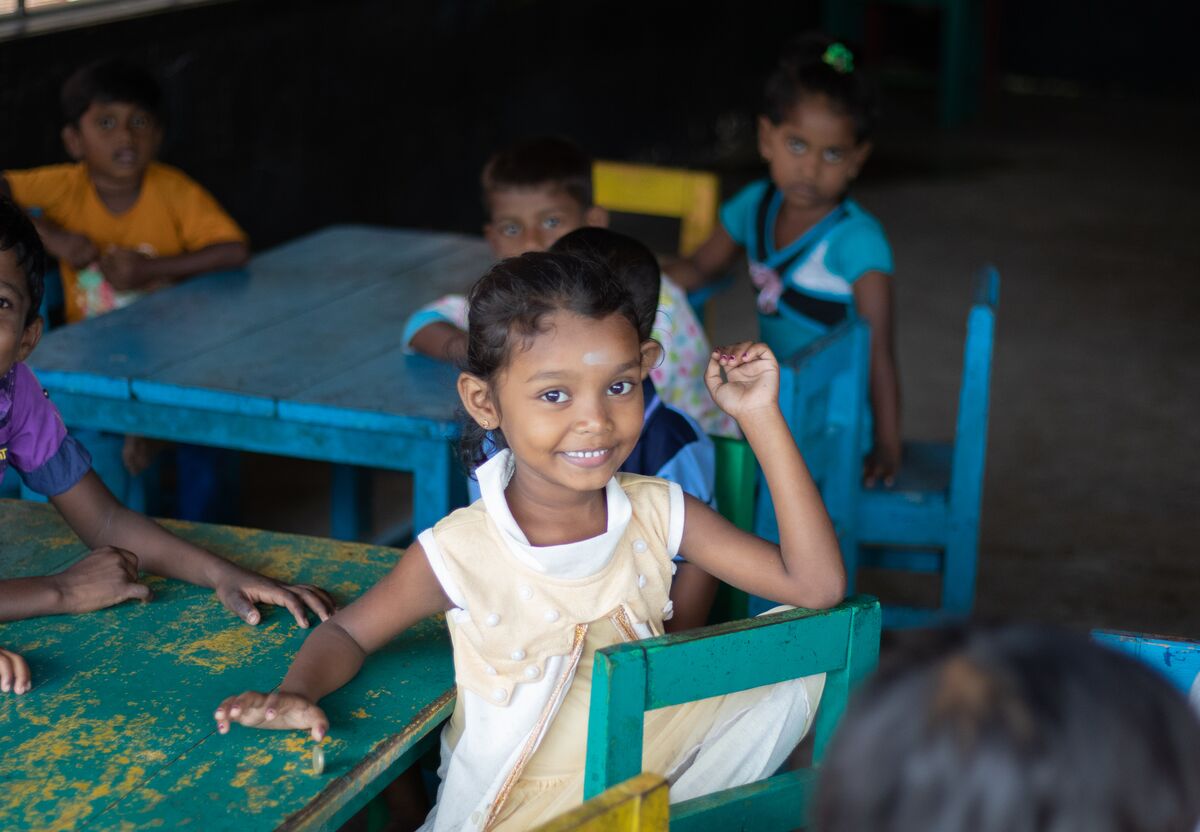
Lush forests, mountains, and tea plantations cover Sri Lanka’s landscape. The island country known as “the pearl of the Indian Ocean” has many residents who struggle with poverty and malnutrition. The children Compassion serves experience these realities on a daily basis. But at the Compassion project, there is hope.
More than
children served
More than
local partners
Serving since
In Sri Lanka






This video was released in July 2022.
If you've been inspired to sponsor a child from Sri-Lanka, visit our sponsorship page.
Pray with us for:
Protection over Compassion staff who travel to high-risk areas
God’s comfort to be with all who have been affected by disasters
The health and wellbeing of sponsored children and their families
In most cultures, a nod means yes and shaking your head means no. That's not the case in Sri Lanka. When meaning yes, people of the island nation actually shake their head from side to side.
Child sponsorship with Compassion is a unique opportunity to provide a child with food, clean water, shelter, clothing and medical care.
Official Country Name: Democratic Socialist Republic of Sri Lanka
Capital City: Sri Jayawardenepura Kotte, Colombo
Population: More than 22.1 million
Official Languages: Sinhala, Tamil
Life expectancy: Male 73 years, female 80 years
Population with access to safe drinking water: 90%
Infant mortality rate: 6 deaths / 1,000 live births
Percentage of children under the age of 5 underweight: 20.5%
Adult literacy rate: Male 93%, female 92%
Religion: Approximately 70% of the population are Buddhists, 12% are Hindus, 10% are Muslims and 7% are Christians.
Percentage living on less than $2.15 a day: 1.0%
Source: CIA World Factbook, International Religious Freedom Report, released in 2022 by the Office of International Religious Freedom, U.S. Department of State
Over the years the Portuguese, Dutch and British have all staked a claim on the island, originally known as Ceylon. Early history charts the rise and fall of several dynasties and the growth of international trade on the island.
Around the 14th century, when the Pandya dynasty in South India collapsed and many Tamils migrated to the north and east of Sri Lanka, and Sinhalese people drifted to the southwest of the country.
Between 1500 and 1800, Sri Lanka saw the arrival of the Portuguese, the Dutch and eventually the British. The settlers exploited the island’s rich resources including cinnamon, freshwater pearls, coconut oil, spices, and even elephants. The British even began bringing Tamil labourers from southern India to work in the tea plantations in the hill area.
The island had gained full independence by 1948, but conflict between the majority Sinhalese and the minority Tamil began to grow. In 1972 Ceylon became a republic and changed its name to Sri Lanka, which means ‘resplendent island’.
A few years later, in 1976, the Liberation Tigers of Tamil Eelam (LTTE) was formed to fight for the rights of the Tamil minority. Tensions began to grow and 1983 marked the start of a 26-year civil war that left 100,000 dead and 20,000 missing.
Peace negotiations repeatedly failed until 2009 when government troops captured the northern town of Kilinochchi, and the Tamil Tigers surrendered. The island of Sri Lanka was devastated by a tsunami on Boxing Day in 2004, which killed more than 30,000 Sri Lankans and destroyed whole coastal communities.
Art
Sri Lankan painting, sculpture and architecture have been greatly influenced by Buddhism. Nature is a recurring theme through many Sri Lankan art, as seen in the many temple paintings and carvings representing images of birds, elephants, wild animals, trees, and flowers.
Music
Elements of Buddhism, European colonisation (particularly Portuguese), and Indian culture can all be heard in Sri Lankan music. In both Buddhist and Hindu temples across the country, you can still hear the hypnotic beat of the Kandyan drums - a style of music that takes its name from the town of Kandy in central Sri Lanka, where there is a famous Buddhist temple. When the Portuguese first arrived on the island, they brought their ukuleles and guitars. There is also kaffrinha, a genre of music, song and dance introduced to the island during its colonial period by those brought in from Africa as slaves. The African people brought to the island also introduced a form of dance known as baila. Regional folk music is sung across the country as a form of cultural expression by different groups. Today, much of Sri Lanka's modern music is influenced by the Bollywood culture in India.
Language
Sinhala and Tamil are both official languages of Sri Lanka. Sinhala is widely spoken in the southern, western and central parts of the island, while Tamil is almost exclusively spoken in northern and eastern parts of the island.
Sinhala: Ow (Yes), Nae (No), Sthuthiyi (Thank you), Sa-dha.ra.yen.piliganimu (You are welcome.), Karuna-ka.ra.la (Please), Sama-wenna (Excuse me), Hallo (Hello), Gihin ennam (Goodbye), A-yubo-wan, suba, Udhae-sa.nak (Good morning), A-yubo-wan, suba. Ra-thriyak (Good night), Engreesi (English), Oya-ge nama.Mokakdha? (What is your name?), Hambu una eka loku sathutak (Nice to meet you.), Kohomadha. Ithin? (How are you?), Hondha (Good), Nara.ka (Bad)
Sports and Games
Volleyball has long been a favourite sport on the island. However, the national pastime is either watching or playing cricket. Cricket fields are scattered across the island, and when big matches are televised, it's not unusual for businesses to close. In 1996, for example, the whole country shut down when the Sri Lankan team beat Australia in the finals to win the Cricket World Cup.
Typical Foods
Rice is the main staple in Sri Lankan cuisine. Flavourful curries are used to make a wide variety of rice dishes ranging from meat or fish-based dishes to vegetables and even fruit. Along with the main curry dish, a typical Sri Lankan meal includes side dishes such as chutneys, pickles, and sambals, which can be extremely spicy. Coconut sambal is the most famous and is made from ground coconut, chillies, dried Maldivian fish and lime juice. These ingredients are ground to a paste and eaten with rice. Along with rice and various curries, coconut milk is a common ingredient in Sri Lankan cuisine and gives it its unique flavour. Mallung is another popular dish made of chopped leaves, grated coconut and red onions.
Since the country gained independence in 1948, the government in Sri Lanka has made education one of its highest priorities.
Primary enrolment for both boys and girls is well over 90%, with higher enrolment for boys and a strong emphasis on secondary education. This high enrolment rate has been possible due to a well-developed network of public schools and, when it comes to academic education, Sri Lanka is one of the best-performing countries in South Asia.
There are pockets of low literacy in the country, particularly in families who work in the tea estates in the centre of the country and those in the former conflict-affected areas in the north and east. There is also limited support for children with disabilities and those who struggle with learning in a classroom environment.
Source: UNICEF
In Yuhasini and Saujanya’s community in Sri Lanka, youth and children do not have many opportunities to learn music and how to play musical instruments. So, when the Compassion project purchased musical instruments, these two 15-year-old friends were eager to learn something new—and discover the talents God had given them! “Being able to learn music at the centre brought out my talent. I didn’t know I had a talent in music until I went for the lessons at the centre!” “Both my parents were happy that I was learning something new—and that made me happy as well,” says Yuhasini.
In Yuhasini and Saujanya’s community in Sri Lanka, youth and children do not have many opportunities to learn music and how to play musical instruments. So, when the Compassion project purchased musical instrumen

Compassion UK Christian Child Development, registered charity in England and Wales (1077216) and Scotland (SC045059). A company limited by guarantee, Registered in England and Wales company number 03719092. Registered address: Compassion House, Barley Way, Fleet, Hampshire, GU51 2UT.